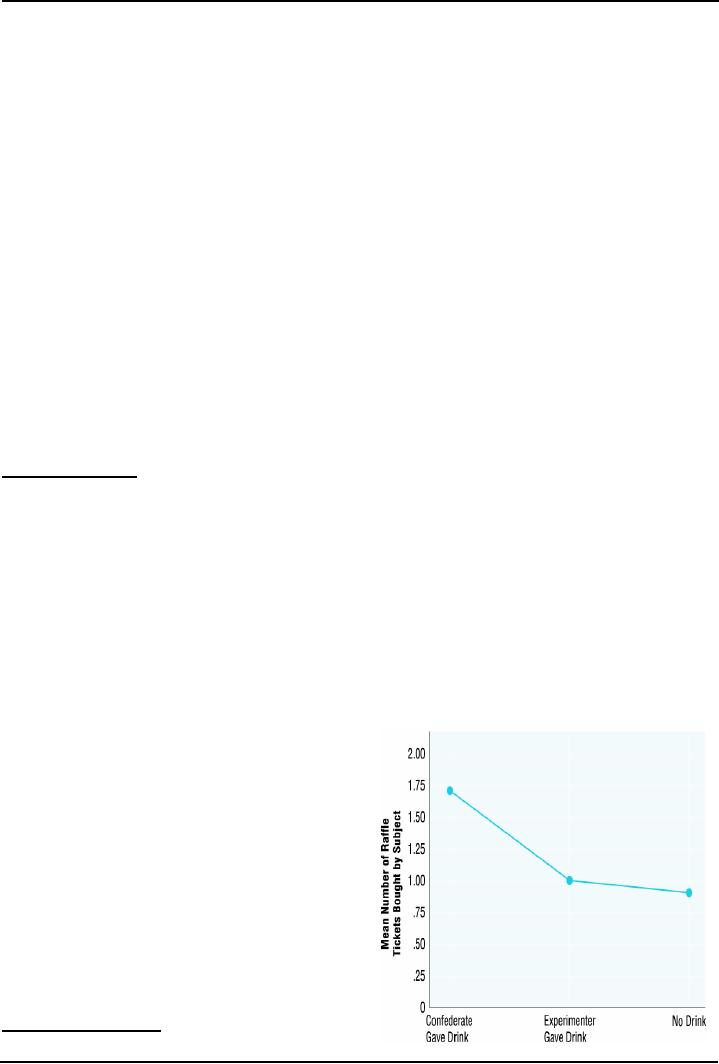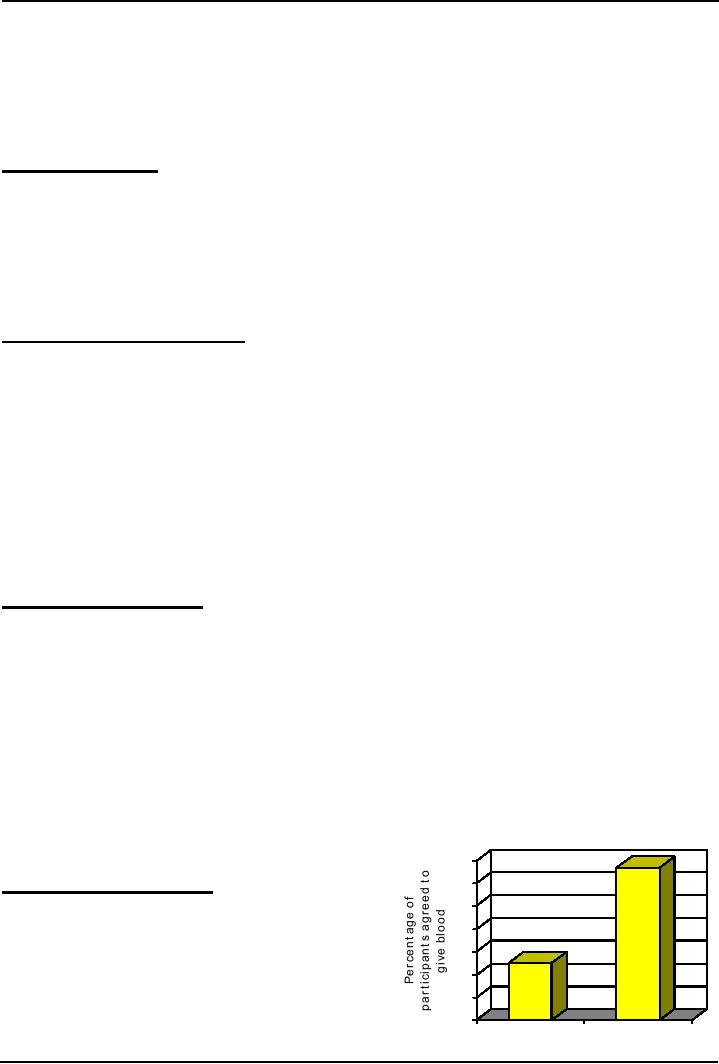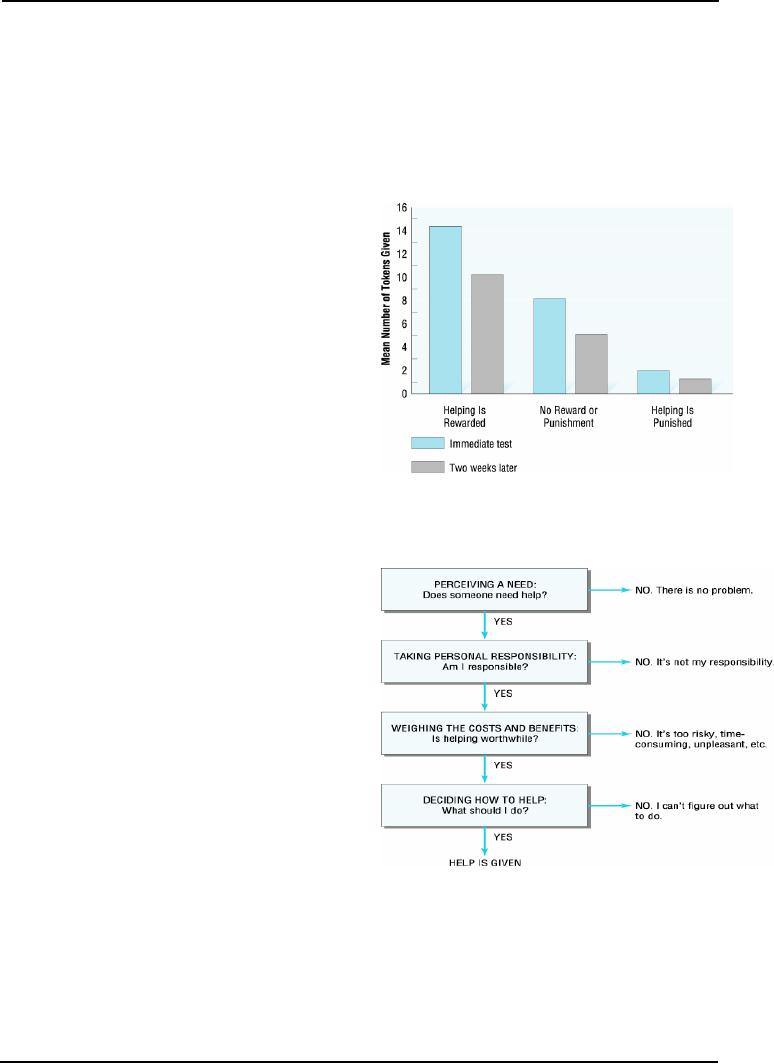 |

Social
Psychology (PSY403)
VU
Lesson
37
PROSOCIAL
BEHAVIOR
Aims
To
introduce psychological aspects of
prosocial behaviour
Objectives
Describe
different types of helping
behavior
·
Discuss
different explanations of helping
behavior: Why do we
help?
·
Evaluate
the Bystander Intervention
Model
Prosocial
Behavior: Chapter Summary
This
chapter discusses the basics of helping
behavior. Altruism is distinguished
from prosocial
behavior.
Several
theoretical perspectives on helping
are considered. These include the
evolutionary perspective; the
socio-cultural
perspective (focusing on social norms of
responsibility, reciprocity, social
justice); the
learning
perspective (modeling and reinforcement);
Latané and Darley's decision-making
perspective
(perceiving
a need, taking personal responsibility,
weighing the costs and benefits,
deciding to help and
taking
action); and attribution theory's
perspective (focusing on our willingness
to help those who deserve
help
because we attribute their problems to
causes out of their
control). Factors that
influence a potential
helper's
likelihood of actually helping
are considered, including mood,
empathy and personal distress,
personality
characteristics, and gender. More
specific situational factors that
influence the decision to
help
are
also discussed, including the bystander
effect (and explanations for
it), environmental conditions,
and
time
pressures.
Definitions
All
of us have experience of helping and being
helped by others. Sometime our prosocial
behavior involves
little
cost, while on other times it
involves money, effort, or
time. Two kinds of helping
behavior exist with
different
motives. Nineteenth century
philosopher Auguste Comte maintained
that egoistic help is based
on
egoism;
in which the person wants
something in return. On the other hand
altruistic help is for
another
person's
welfare. Prosocial, egoistic and
altruistic behaviors are
distinguished below from
each other:
Prosocial
Behavior: Voluntary
behavior that is carried out
to benefit another person
Egoistic
helping: A form of
helping in which the ultimate
goal of the helper is to increase
one's own
welfare
Altruistic
helping means
helping someone when there is no
expectation of a reward
Types
of Helping (McGuire,
1994)
·
Casual
help, e.g., giving
directions
·
Substantial
help, e.g., lending
money
·
Emotional
help, e.g., listening
·
Emergency
help, e.g., saving someone,
helping in crisis
Explanations
of helping behavior: Why do we
help?
·
An
Evolutionary perspective
·
A
Sociocultural Perspective: Norms of
reciprocity, social responsibility, social
justice
·
A
Learning Perspective
152

Social
Psychology (PSY403)
VU
Helping
is Consistent with Evolutionary
Theory
Sometime
we help for some personal
gain, while on other times
we help without any personal
motive. Not
only
human beings, but many examples of
prosocial behavior have been observed
among animal species,
e.g.,
dolphins, lions, chimpanzees,
etc. One principle of
evolutionary theory is that
any social behavior
that
enhances
reproductive success (the
conception, birth, and survival of
offspring) will continue to be
passed
on
from one generation to the next.
However, to reproduce, an animal must
first survive. Taken
together,
there
may be mechanisms for the
genetic transmission of helpful
inclinations from generation to
generation.
Evolutionary
theorists contend that it is not only
personal survival that is important.
Rather it is a gene
survival
that promotes reproductive
fitness.
"Kin
selection"
provides an explanation for
gene survival:
·
There
is a preference for helping blood
relatives because this will
increase the chances for
the
helper's
genes to pass on to successive
generations. Because your blood
relatives share many
of
your
same genes, by promoting
their survival you can
also preserve your genes
even if you don't
survive
the helpful act. This
principle of kin selection
states
that you will exhibit
preferences for
helping
blood relatives because this
will increase the odds that
your genes will be
transmitted to
subsequent
generations.
·
Animals
help others more who are
genetically related.
But
People also help non-relatives.
How this becomes possible?
This is explained by Trivers
(1983) in the
next
perspective on prosocial behavior
explanations.
A
Socio-cultural Perspective: Social
Norms
Reciprocal
helping:
According
to this principle, people
are likely to help strangers
if it is understood that the recipient
is
expected
to return the favor at some
time in future. Trivers
(1983) believes that
reciprocal helping is
most
likely
to evolve in a species when
certain conditions exist.
Three of these conditions
are:
·
Social
group living, so that
individuals have ample opportunity to
give and receive
help.
·
Mutual
dependence, in which species
survival depends on cooperation,
and
·
The
lack of rigid dominance hierarchies, so
that reciprocal helping will
enhance each animal's
power.
Considerable
research supports both kin
selection and reciprocal helping among
humans and other animals.
For
example, when threatened by predators, squirrels
are much more likely to warn
genetically related
squirrels
with which they live
than unrelated squirrels or
those from other areas.
Similarly, across a
wide
variety
of human cultures, relatives receive more
help than non-relatives,
especially if the help
involves
considerable
costs, such as being a
kidney donor (Borgida et
al., 1992). Reciprocal
helping is also common
in
humans, and, consistent with
evolutionary-based mechanisms to prevent
cheating, when people
are
unable
to reciprocate, they tend to experience
guilt and
Figure
1 illustrates the power
of
reciprocity:
shame.
Three
social norms that serve as
guidelines for
prosocial
behavior
deal
with
reciprocity,
responsibility,
and justice. The first of
these prosocial
norms,
the norm of reciprocity, is based
on
maintaining
fairness in social relationships. This
norm
prescribes
that people should be paid
back for
whatever
they give us. This
norm also explains
the
discomfort
that people typically experience
when they
receive
help but cannot give something back in
return.
Norm
of responsibility:
In
comparison to the reciprocity norm, the
other two
153

Social
Psychology (PSY403)
VU
prosocial
norms dictate that people
should help due to a greater awareness of
what is right. For instance,
the
norm
of social responsibility states
that we should help when
others are in need and dependent on
us.
Acting
on this norm, adults feel responsible
for the health and safety of
children, teachers have a sense
of
duty
and obligation to their students, and
police and fire-fighters believe
they must help even at the
risk of
their
own lives. This social
responsibility norm requires help-givers
to render assistance regardless of
the
recipient's
worthiness and without an expectation of
being rewarded.
Norm
of social justice:
In
contrast to the dependent-driven social
responsibility norm, the norm
of social justice stipulates
that
people
should help only when
they believe that others
deserve assistance. People become
entitled to the
deserving
label by either possessing
socially desirable personality
characteristics or by engaging in
socially
desirable
behaviors. Thus, according to the social
justice norm, if "good"
people encounter unfortunate
circumstances,
they deserve our help
and we have a duty to render
assistance.
A
Learning Perspective
Observational
learning in children:
According
to social learning theorists, observational
learning or modeling can
influence the development of
helping
in at least two ways (Rosenkoetter,
1999; Rushton, 1980). First, it
can initially teach children
how
to
engage in helpful actions. Second, it
can show children what is
likely to happen when they
actually
engage
in helpful (or selfish)
behavior. In this learning
process, what models say and
what they do both
shape
the observers' prosocial behaviors.
For example, in one study,
sixth-grade girls played a
game to win
chips
that could be traded for
candy and toys (Midlarsky et
al,, 1973). Prior to
actually playing, each of
the
girls
watched a woman play the game. In the
charitable condition, the adult
put some of the chips she
won
into
a jar labeled "money for
poor children" and then
urged the girl to think
about the poor children
who
would
"love to receive the prizes these chips
can buy." In the selfish
condition, the adult model
also urged
the
child to donate chips to the poor
children, but she did so
after putting all her chips
into a jar labeled
"my
money."
Results indicated a clear effect of
prosocial modeling. Girls
who had observed the
charitable
model
donated more chips to the poor than those
who had seen the selfish
model.
Prosocial
modeling in adults:
Modeling
prosocial behavior is not
confined to children. In one
study conducted in a natural
setting,
motorists
who simply saw someone
helping a woman change a
flat tire were more likely to
later stop and
assist
a second woman who was in a
similar predicament (Bryan & Test,
1967). In another experiment
(Rushton
& Campbell, 1977), female
college students interacted
with a friendly woman as part of a
study
on
social interaction (this was
not the true purpose, and the
woman was a confederate of the
researchers).
When
the fabricated study was completed, the
two women left the lab
together and passed a table
staffed by
people
asking for blood donations.
When participants were asked
first, only 25% agreed, and
none actually
followed
through on their pledge six
weeks later. However, when
the confederate was asked first
and
signed
up to donate blood, 67% of the
participants also agreed to
give blood, and 33% actually
fulfilled
their
commitment.
Modelling
helping behaviour
Figure
2 more clearly illustrates the findings
of this
study:
70
Rewarding
prosocial behavior:
60
Although
observing the prosocial actions of others
can
50
shape
children's and adults' own helping,
the
40
consequences
of their actions will often
determine
30
whether
they continue to engage in
prosocial behavior.
20
Social
rewards, such as praise, are generally
more
effective
reinforcers than material rewards,
such as
10
money
(Grusec, 1991). In one such
experiment
0
Participant
asked
Confederate
conducted
by Rushton and Goody Teachman
(1978),
first
asked
first
154

Social
Psychology (PSY403)
VU
children
were first induced to behave generously
by having generosity modeled to them as
in the previously
described
game-token studies. When the
children donated some of their
winnings to an orphan
named
Bobby,
the model either praised the child
for his or her imitative
generosity (reward condition) by
saying
"Good
for you, that's really
nice of you," or scolded the
child (punishment condition) by
saying "That's
kind
of silly for you to give to
Bobby. Now you will have
fewer tokens for yourself."
There was also a
no-
reinforcement
condition in which the adult
said nothing. As you can
see in figure 3, children
who were
praised
gave more to Bobby on later trials
than did children who were
scolded. The effects of being
either
rewarded
or punished for prosocial behavior were
so strong that they still
influenced how much
the
children
gave to Bobby two weeks
later. The results are
demonstrated in Figure
3 as
given below:
Another
study demonstrates that
verbal praise or
scolding
by an adult model can either
strengthen or
weaken
children's level of generosity
(Moss & Page,
1972).
In the reward condition, the woman
asking for
directions
rewarded her helper by saying, "Thank
you
very
much, I really appreciate this." In contrast, in
the
punishment
condition the woman responded to
help by
saying,
"I can't understand what you're
saying, never
mind,
I'll ask someone else."
Researchers found
that
when
people were rewarded by the first woman,
90%
of
them helped the second woman.
However, when
punished
by the first woman, only 40%
helped in the
later
situation. As in the study with
children, this adult
study
suggests that people's future decisions
to help
are
often influenced by the degree to
which current helpful
efforts are met by praise or
rebuke.
When
do we help?
On
March 13, 1964, Kitty
Genovese was stabbed
on
her
way back to home. A man stabbed her
with knife
near
her apartment building in New York at
3.20 a.m.
Her
cries rang out in the night
but nobody came
for
help
while at least 38 of her neighbors were
watching
from
the windows. The apathy of her
neighbors was
the
topic of news stories, and
people's dinner
conversations.
Two people who discussed the
murder
at
length were social psychologists John Darley
and
Bibb
Latane.
Bystander
intervention model eventually
emerged as a
result
of these dinner
discussions.
Bystander
intervention involves a series
of
decisions
Although
people often see people in
need of help, they
sometimes
don't go and offer it themselves. People
decide whether or not to offer
assistance based on a
variety
of perceptions and evaluations. Help is
offered only if a person
answers "yes" at each step.
The
bystander
intervention model maintains
that there are four stages
which must be gone through
before
helping
occurs.
As
it can be seen in Figure 4
given below that at each
point in this five-step
process, one decision results
in
no
help being given, while the
other decision takes the bystander
one step closer to
intervention.
155

Social
Psychology (PSY403)
VU
The
first thing that you, as a
potential helper, must do is
notice that something unusual is
happening.
Unfortunately,
in many social settings, countless sights
and sounds flood our senses.
Because it is
impossible
to attend to all this stimuli, and
because we may be preoccupied with
something else, a cry
for
help
could conceivably go completely
unnoticed. This stimulus
overload effect is more likely to occur
in
densely
populated urban environments
than in rural settings (Milgram,
1970). Indeed, it is one of the
likely
reasons
why there is a negative correlation
between population density and helping
(Levine, 2003).
Another
reason is that sometimes it is
difficult to notice things
out of the ordinary as what is unusual in
one
setting
may be a normal occurrence in
another. As a bystander to an emergency, if you do
indeed notice
that
something unusual is happening you move
to the second step in the decision-making
process: deciding
whether
something is wrong and help
is needed. Returning to the previous
example, if you pass by
an
unconscious
man on the sidewalk you may
ask yourself, "Did he suffer
a heart attack or is he merely
sleeping.
When you define the
situation as an emergency, the bystander intervention
model states that
the
third
decision you must make is
determining the extent to which
you have responsibility to help.
According
to
Latane and Darley, one
factor that may play a
role in your decision to
help or not is whether
an
appropriate
authority figure is nearby. Let's
continue this hypothetical emergency
situation, but now
imagine
that there is no police car in
sight. Faced with the
reality of a clear emergency, you still
may not
help
if you convince yourself
that all the other motorists
watching this incident could
help just as well as
you.
The presence of these other
potential helpers, like the presence of
authority figures, may cause
you to
feel
less personally responsible for
intervening.
If,
however, you assume
responsibility for helping, a
fourth decision you must
make is the appropriate form
of
assistance to render. But in the
heat of the moment, what if you
are not sure what to do? You
may
become
paralyzed with uncertainty
about exactly how to render
assistance.
Finally,
if you notice something unusual,
interpret it as an emergency, assume
responsibility, and decide
how
to help, you still must
decide whether to implement your
course of prosocial
action.
Reading
·
Franzoi,
S. (2003). Social
Psychology. Boston:
McGraw-Hill. Chapter 14.
Other
Readings
·
Lord,
C.G. (1997). Social
Psychology. Orlando:
Harcourt Brace and Company. Chapter
8.
·
David
G. Myers, D. G. (2002). Social
Psychology (7th ed.).
New York:
McGraw-Hill.
·
Taylor,
S.E. (2006). Social
Psychology (12th ed.). New York: Prentice
Hall.
156
Table of Contents:
- INTRODUCTION TO SOCIAL PSYCHOLOGY:Readings, Main Elements of Definitions
- INTRODUCTION TO SOCIAL PSYCHOLOGY:Social Psychology and Sociology
- CONDUCTING RESEARCH IN SOCIAL PSYCHOLOGY:Scientific Method
- CONDUCTING RESEARCH IN SOCIAL PSYCHOLOGY:Evaluate Ethics
- CONDUCTING RESEARCH IN SOCIAL PSYCHOLOGY RESEARCH PROCESS, DESIGNS AND METHODS (CONTINUED)
- CONDUCTING RESEARCH IN SOCIAL PSYCHOLOGY OBSERVATIONAL METHOD
- CONDUCTING RESEARCH IN SOCIAL PSYCHOLOGY CORRELATIONAL METHOD:
- CONDUCTING RESEARCH IN SOCIAL PSYCHOLOGY EXPERIMENTAL METHOD
- THE SELF:Meta Analysis, THE INTERNET, BRAIN-IMAGING TECHNIQUES
- THE SELF (CONTINUED):Development of Self awareness, SELF REGULATION
- THE SELF (CONTINUE…….):Journal Activity, POSSIBLE HISTORICAL EFFECTS
- THE SELF (CONTINUE……….):SELF-SCHEMAS, SELF-COMPLEXITY
- PERSON PERCEPTION:Impression Formation, Facial Expressions
- PERSON PERCEPTION (CONTINUE…..):GENDER SOCIALIZATION, Integrating Impressions
- PERSON PERCEPTION: WHEN PERSON PERCEPTION IS MOST CHALLENGING
- ATTRIBUTION:The locus of causality, Stability & Controllability
- ATTRIBUTION ERRORS:Biases in Attribution, Cultural differences
- SOCIAL COGNITION:We are categorizing creatures, Developing Schemas
- SOCIAL COGNITION (CONTINUE…….):Counterfactual Thinking, Confirmation bias
- ATTITUDES:Affective component, Behavioral component, Cognitive component
- ATTITUDE FORMATION:Classical conditioning, Subliminal conditioning
- ATTITUDE AND BEHAVIOR:Theory of planned behavior, Attitude strength
- ATTITUDE CHANGE:Factors affecting dissonance, Likeability
- ATTITUDE CHANGE (CONTINUE……….):Attitudinal Inoculation, Audience Variables
- PREJUDICE AND DISCRIMINATION:Activity on Cognitive Dissonance, Categorization
- PREJUDICE AND DISCRIMINATION (CONTINUE……….):Religion, Stereotype threat
- REDUCING PREJUDICE AND DISCRIMINATION:The contact hypothesis
- INTERPERSONAL ATTRACTION:Reasons for affiliation, Theory of Social exchange
- INTERPERSONAL ATTRACTION (CONTINUE……..):Physical attractiveness
- INTIMATE RELATIONSHIPS:Applied Social Psychology Lab
- SOCIAL INFLUENCE:Attachment styles & Friendship, SOCIAL INTERACTIONS
- SOCIAL INFLUENCE (CONTINE………):Normative influence, Informational influence
- SOCIAL INFLUENCE (CONTINUE……):Crimes of Obedience, Predictions
- AGGRESSION:Identifying Aggression, Instrumental aggression
- AGGRESSION (CONTINUE……):The Cognitive-Neo-associationist Model
- REDUCING AGGRESSION:Punishment, Incompatible response strategy
- PROSOCIAL BEHAVIOR:Types of Helping, Reciprocal helping, Norm of responsibility
- PROSOCIAL BEHAVIOR (CONTINUE………):Bystander Intervention, Diffusion of responsibility
- GROUP BEHAVIOR:Applied Social Psychology Lab, Basic Features of Groups
- GROUP BEHAVIOR (CONTINUE…………):Social Loafing, Deindividuation
- up Decision GROUP BEHAVIOR (CONTINUE……….):GroProcess, Group Polarization
- INTERPERSONAL POWER: LEADERSHIP, The Situational Perspective, Information power
- SOCIAL PSYCHOLOGY APPLIED: SOCIAL PSYCHOLOGY IN COURT
- SOCIAL PSYCHOLOGY APPLIED: SOCIAL PSYCHOLOGY IN CLINIC
- FINAL REVIEW:Social Psychology and related fields, History, Social cognition